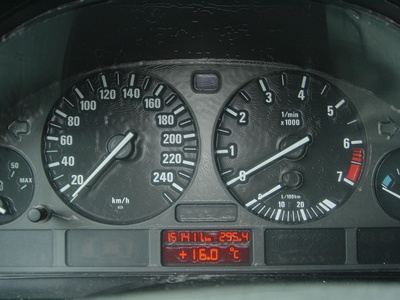
Dash pads can become sun-blistered, dry, rotted or cracked with age. They often offer a first impression of the vehicle's interior and can be judged as unsightly or even an embarrassment to the owner. Replacing dash pads requires a substantial financial outlay and numerous hours of labor. Finding the exact match, particularly on older cars, can be frustrating when trying to locate them through dealerships or dismantling yards. Used dash panels have the potential to be in worse shape than the originals. However, you can repair cracks, splits and gouges with the right product and a little patience.
Clean the cracked or split area on the dash pad. Use a mixture of dish washing soap and water. Wipe all moisture residue away with a shop rag.

Mask around the outside edges of the crack with tape, leaving extra room for overlapping compound and sanding. Use newspaper to cover larger areas.

Use coarse sandpaper to sand over the cracked area along the sides. Use a cross-hatch technique--sanding back and forth at right angles in a checkerboard pattern. Wipe the sanding dust clean with a damp rag.

Mix the plastic welding compound in a small cup according to directions. One tube has hardener, and the other one has a resin. Equal parts of the mixture will suffice in most applications. Stir the contents of the mixture thoroughly.

Spread the plastic welding compound directly into the crack with a putty knife or plastic spreader, leaving a high spot over the crack. Be sure to overlap the compound over the edges of the crack. Let the mixture dry per the manufacturer's instructions.
Use the coarse sandpaper to sand down the dried plastic weld, using easy, circular strokes until the area is nearly flush with the dash pad surface. Use fine-grade sandpaper to finish reducing the height until it is smooth and level. Paint the surface of the cracked area with matching paint, or remove all the masking material and fine- sand the complete dashboard so that you can paint the entire piece.
Mask off the damaged dash pad area. If there are any curled lips in the vinyl, use a razor knife to cut them down to the dash pad surface. For deep cracks and gouges, cut strips of cardboard to fill in the gaps or cracks. For very deep cuts, double the cardboard thickness by using spray adhesive to join them.
Spray adhesive inside the crack and the underside of the cardboard patch. Let it get tacky. Apply the patch inside the crack or gouge. Make sure it sits slightly below the height of the dash pad surface. Let it set until completely dry.
Use the spreader to apply the plastic welding compound over the patch, overlapping the edges. Use enough to raise it slightly above the dash pad surface. Allow it to dry thoroughly.
Sand the patched area with coarse sandpaper. Finish smoothing the surface with fine-grit sandpaper. Wipe clean. Paint the patched area, or re-mask and paint the entire dash pad.